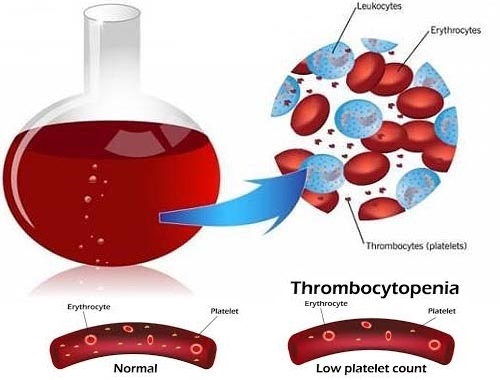Thrombocytopenia (Thrombopenia)
This is a relative decrease of platelets in blood. A normal human platelet count ranges from 150,000 to 450,000 platelets per microlitre of blood. Thrombocytopenia is defined as a low circulating platelet count (<150,000 per microliter). Platelets are parts of the blood that help blood to clot. This condition is sometimes associated with abnormal bleeding. Platelet life span is normally approximately 5 days, with continual renewal. True thrombocytopenia results from either a reduced production of platelets in the bone marrow, increased clearance, or sequestering of platelets in the spleen. Thrombocytopenia is often divided into three major causes of low platelets: Not enough platelets are made in the bone marrow; Increased breakdown of platelets in the bloodstream; Increased breakdown of platelets in the spleen or liver; The bone marrow may not make enough platelets if there is a case of: Aplastic anemia; Cancer in the bone marrow such as leukemia; Cirrhosis; Folate deficiency; Infections in the bone marrow; Myelodysplasia; Vitamin B12 deficiency; Use of certain drugs may also lead to a low production of platelets in the bone marrow. The most common example is chemotherapy treatment. The following health conditions cause increased breakdown of platelets: Disseminated intravascular coagulation (DIC); Drug-induced nonimmune thrombocytopenia; Drug-induced immune thrombocytopenia; Hypersplenism (swollen spleen); Immune thrombocytopenic purpura (ITP); Thrombotic thrombocytopenic purpura.
